Australia So Much to See
Copyright (C) 2015 AustraliaSoMuchtoSee.com. All rights reserved


Home > Travelogues > 2010-2017 Travelogues Index > Mid West > Greenough Flats, Geraldton and Chapman Valley
The Greenough River flats are a floodplain with rich soil, separated from the coast by mobile sand dunes. Due to coastal winds, trees lean over at right angles and grow parallel to the ground.
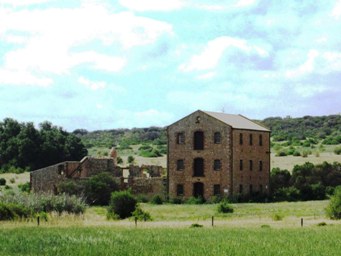
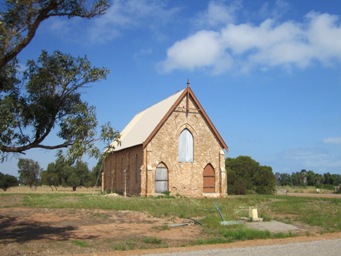

Most of the buildings on the floodplain were constructed between 1863 and 1913. Many have had restoration done on them. A signed Heritage Drive of 57 kilometres passes some significant buildings and to the restored historic village for which a small entry fee applies.
Gray's Store (above) was constructed by convict labour for Henry Gray who was a land owner and an import export merchant, with
most of his stock arriving on sailing ships to the port at Dongara. He lived in the two storey residence attached to the store.
Used as a residence into the 1950's this building was badly damaged by fire in 1975. Thanks to restoration, we can
now see the shop and residence when taking the Heritage Trail drive.
Wesley chapel (at right) was constructed in 1867 by convict labour from local limestone. Restorers have added a new roof
and covered the window openings as the original windows went missing.
The area was first explored by George Grey in 1839 after which he named the area after Sir George Bellas Greenough, the president
of the Royal Geographical Society in London. Grey claimed that the area could become the granary of Western Australia.
In 1851 Augustus Gregory surveyed 30,000 acres (120 kmē) of land in the region which became known as the Greenough Flats. This was subdivided
into 20- and 30-acre (120,000 m2) lots with the view to encouraging English settlers who would be more used to the relatively small
(by Australian standards) farm sizes. Within a few years it had developed into a highly successful wheat growing area and a population
of over 1,000 from which a successful town developed.
A series of disasters starting with a major cyclone in 1872 and major flooding
in 1888 as well as the discovery of gold in the goldfields caused the gradual decline and abandonment of the settlement so that by
1900 most of the settlers had left the area with many of the small farmlets converted to grazing. The town fell into disrepair until
a tourism-based project in the 1980s helped refurbish many of the buildings.
From Wikipedia
When Clinch's Mill was first built in 1858, it was only a single storey building built from local sandstone. Originally the Mill was
owned by Edward Whitfield who in 1869, sold it to Thomas Clinch, who went about renovating the Mill, eventually making it a massive
three stories high. He added rooms and then built a home for himself and cottages nearby for his workmen. He then began producing
flour using a horse driven mill stone.
Extract from Virtual Tourist (website no longer exists)
This three storey mill has stood the test of time. Prior to the restoration of the Greenough Flats buildings, the three storey
ruin stood tall and dominated the landscape. It is on private property so can only be seen from the roadway.
History of the Greenough Flats
Having visited Geraldton several times in the past, we did not tour the town this time, heading instead into the -
The Greenough Flats is still farmed, with much larger holdings that in its early history, and there are a number of lifestyle homes
on small holdings. The sand dunes are now mainly covered in vegetation and stable.
There is a caravan park with a fuel
outlet at the S Bend on the southern edge of the flats.
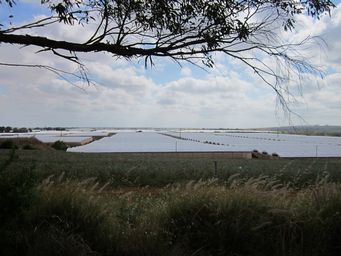
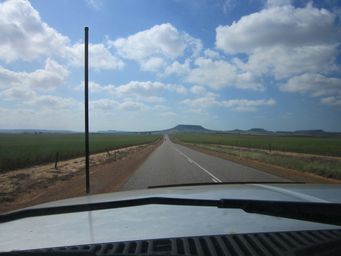
This large complex of greenhouses near Narngulu is for growing vegetables, principally cucumbers, in a family business.
With a warmer climate than Perth and the South West, tomatoes from Geraldton have enabled Western Australians to enjoy local
produce for longer. Now with climate controlled greenhouses, the season can be extended even further.
In addition
to tomatoes and cucumbers, capsicum, eggplant and zucchini are summer vegetables grown in the Geraldton area during the winter months.
In a windswept coastal region, the flat tops of the mesas are typical of the scenery around Geraldton, particularly the Chapman Valley
and adjacent Northampton areas.
Driving into the valley where we were to visit the present seat of the Shire
Nabawa and the earlier seat of Nanson.
Nanson community runs the Chapman Valley Museum, which we will also visit.
Being in an agricultural area, we will also visit a large cropping and sheep farm.
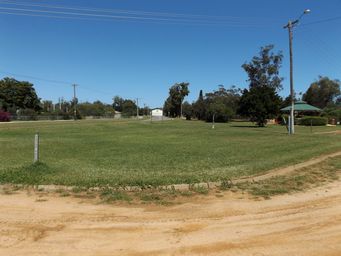
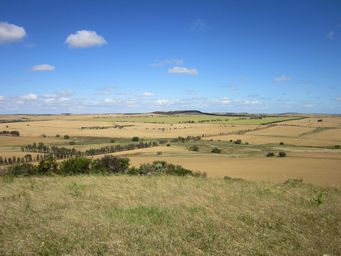
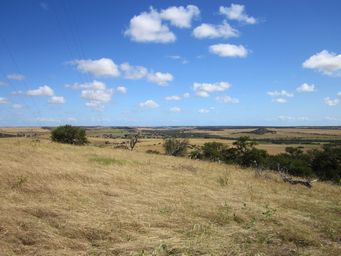
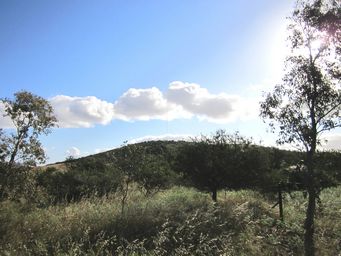
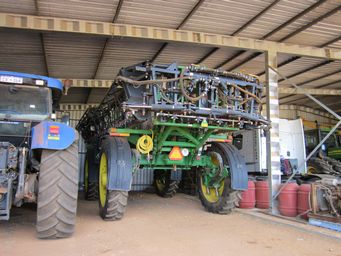
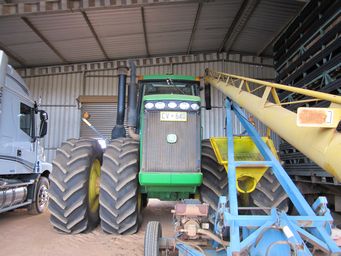
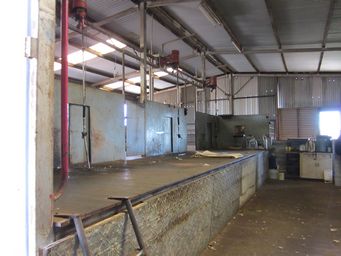
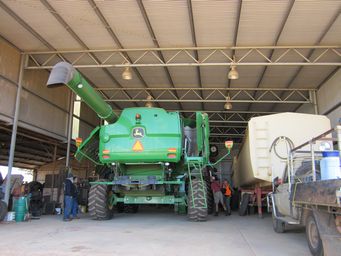
After driving up to the top of this hill (at right) near Nabawa, we had 360° views of the surrounding farmland (below).
Much
of the area we were overlooking belonged to the farms we were going to visit.
This family own three farms and lease
further properties, principally for cropping. Hay had been cut and bales and crops were ripening ready for harvesting.
The machinery was large and well maintained being kept under cover in large sheds. Below left is the sprayer; note the narrow
wheels to do little damage to crops being sprayed. Below right tractor with auger on front.
Header (harvester) above left with chaser bin alongside. Shearing shed above right with a raised board for easy picking up fleeces.
This is a small three stand shed as they only run 1,200 merino sheep negated to their extensive cropping schedule.
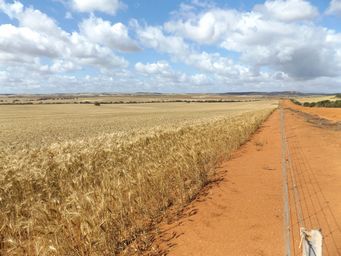
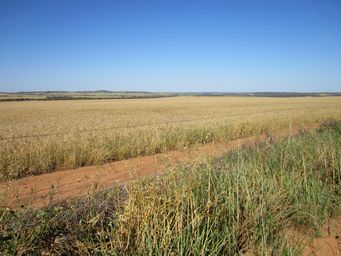
Crops in the region were ready or almost ready for harvest, and it was only September (2014). These photos were taken in the
area around Nanson. A lady at Ajana a little way further north told us that it was the earliest they had ever harvested.
Central Nabawa (at left), the seat of the Chapman Valley Shire headquarters. Nabawa was previously known as Paradise Gully.